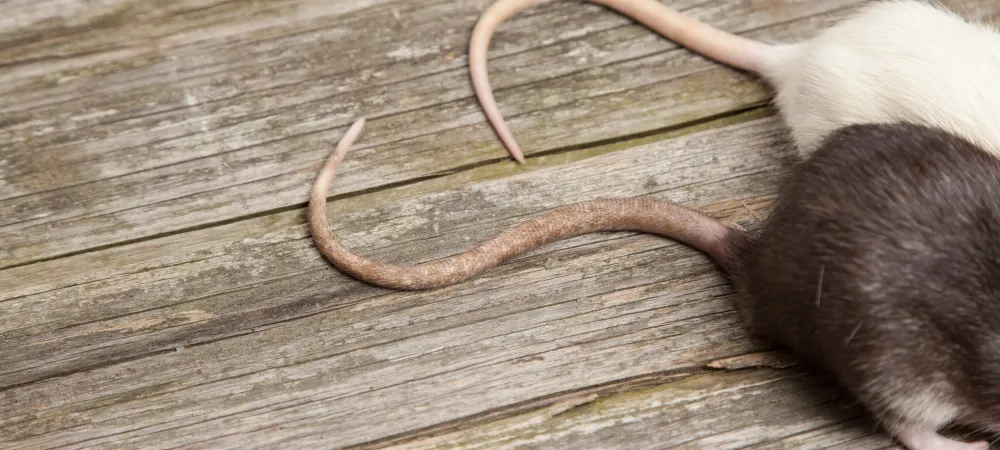Norway Rats In Pittsburgh

A rat infestation is a well-deserved concern due to the health threats that accompany them. Rat bites and rat urine are responsible for spreading diseases, some of which can result in kidney and liver damage.
The two primary species of rat known to invade homes throughout the United States are the roof rat and the Norway rat. Of those, the Norway rat appears to be the more common. They are also referred to as sewer rats and brown rats. In addition to spreading diseases, the Norway rat is capable of consuming large quantities of food and contaminating all other foods of which they come in contact. They are also destructive to buildings by their constant chewing and burrowing. Not only will they gnaw holes in drywall and wooden structural components, but the Norway rat also disturbs insulation and creates fire risks from chewing into electrical wiring.
The Norway rat has a husky appearance and is brown in color, weighing an average of 11 ounces. This rat can be expected to measure anywhere from 13 to 18 inches long at maturity. This includes the tail, which can be from 6-9 inches in length. The fur of the Norway rat is brown but can include a few scattered black splotches on the back. The underside will appear grey or cream.
As with most rodents, the Norway rat is very prolific. One female rat can have from 4 to 6 litters per year. According to The Department of Public Health, breeding is most active in the spring and fall. Their gestation period is from 21-23 days and produces anywhere from 6 to 12 young. The young pups reach reproductive maturity in about 3 months and start the production process all over again. The life cycle of a rat is up to 18 months with most dying before 12 months of age. As you can see from their reproductive abilities, a population of rats can quickly get out of control.
Survival and reproduction abilities require a good source of food, water, and shelter. Eliminating rat populations can be as simple as removing all supplies of food and water and sealing off any possibilities of entry. Good, consistent sanitation will be very effective in limiting the ability for rats to survive. Helpful prevention tips include proper storage of food material in rodent-proof containers. These should be glass or other materials not capable of being chewed. Additionally, all spills and crumbs must be kept clean at all times. Rats consume up to one ounce of water daily. Removing all available water sources will drastically reduce the ability of rats to survive.
Another preventive measure is to inspect all buildings and seal off any opening larger than a ¼ inch. A rat can squeeze through an opening as large as ½ inch across. Seal around any utility line entrances. Cover all floor drains and vents with metal grates.
Even though these tips are helpful, they will not guarantee the total absence of rats. Professional pest control companies should be contacted the moment homeowners or business owners see signs of rat activity. Witt Pest Management is Pittsburgh’s oldest and most advanced pest control company, providing quality residential and commercial pest control service throughout the greater Pittsburgh area. We also offer comprehensive rodent removal services.
